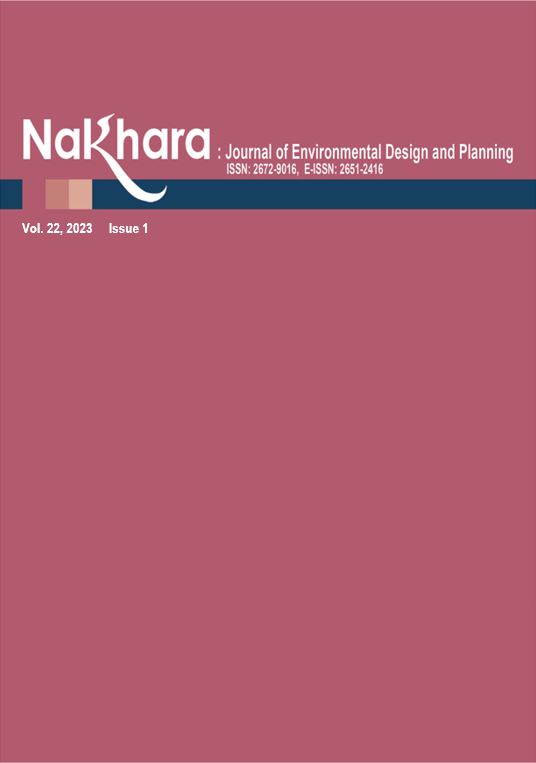Pleang (แผลง): Portraying Prince Naris’ Cultural Hybridity in Architectural Forms
Main Article Content
Abstract
His Royal Highness Prince Narisaranuvativongse (1863 –1947) was a court designer whose works transcended various fields of art, design, music, and architecture in Siam. Since his death, the prince’s legacy has been fading from the public consciousness. This research comprises an architectural design proposal to resurrect recognition of his designs, and to create public connectivity in terms of physical spaces by focusing on Prince Naris’ way of thinking, as expressed in a Thai word, pleang (แผลง), employed by Prince Naris himself. Pleang does not mean conventional, nor does it mean atypical. Pleang is a way of thinking that has limited relation to building typologies. We chose to study one architectural element that has an integral place in architectural theory and practice, namely, the window, which has often been considered as a “device” to create human comfort, and a “destination” of a room, with the qualities of being both “somewhere” and “nowhere.” On-site observations and architectural surveys were used to document Prince Naris’ placement of windows and fake windows in religious buildings along with his arrangement of the windows in his own private residence and studio known as Ban Plainern. The findings were later applied to an architectural design of existing shophouses that buffer a residential complex belonging to Prince Naris’ descendants from Rama IV Road. We propose a renovation project, under the Prince Naris Learning Center program, to turn this building into an aperture to Ban Plainern putting it clearly into the public eye.
Article Details

This work is licensed under a Creative Commons Attribution-NonCommercial-NoDerivatives 4.0 International License.
References
Anumanratchadhon. (1963). Banthưk rư̄ang khwāmrū tāng tāng lem sām [Correspondences between Prince Naris and Phraya Anumanratchadhon on Thai cultural contests Vol. 3]. The Social Science Association of Thailand.
Chaichongrak, R. (1996). Rư̄an Thai dœ̄m [Thai Traditional Houses]. The Association of Siamese Architects under Royal Patronage.
Chitrabongs, C. (2017). Prince Naris: A Siamese designer. Serindia Publications.
Jiratasanakul, S. (2013). Ngān ʻō̜k bǣp sathāpattayakam Thai fī phra hat čhaofākromphrayānrisānuwattiwong [Thai architecture design works of H.R.H. Prince Narisaranuvativongse]. Amarin Printing and Publishing.
Koolhass, R. (2014). Elements of architecture: Window. Marsilio.
Narissaranuvadtivong & Damrongrachanupab. (1961). Sān somdet lem sipsō̜ng [Correspondences between Prince Naris and Prince Damrong vol. 12]. Kurusapha.
Narissaranuvadtivong, & Diskul, P. (1969). Chotmāi tōtō̜p rawāng somdet ... čhaofākromphrayānrisānuwattiwong kap mō̜mčhao philai lēkhā Dissakul [Correspondences between Prince Naris and Mom Chao Pilai Diskul]. Wacharin Karnpim.
Piazzardi, P. (2010). Italians at the Court of Siam. Italasia Trading (Thailand).
Rojanastien, B. (2005). Tamnān sathāpattayakam Thai nưng rư̄an Thai dœ̄m [Legend of Thai Architecture 1 Thai Tradtional Houses]. Bangkok Publishing.
The Committee on Documentation an Historical Records Under the National Commission on the Celebration on Auspicious Occasion of His Majesty the King’s 7th Cycle Birthday Anniversary 5th December. (2012). Tribhumikatha, Buddhist cosmology: The illustrated King Rama IX edition (2012). Ministry of Culture.
Wright, A., & Breakspear, O.T. (1994). Twentieth century impressions of Siam: Its history, people, commerce, industries and resources. White Lotus.

